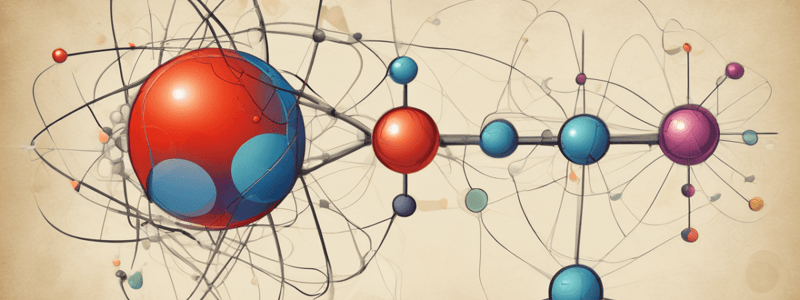Podcast
Questions and Answers
What is the definition of an atomic number?
What is the definition of an atomic number?
The number of protons in the nucleus of an atom.
How is the mass number of an atom calculated?
How is the mass number of an atom calculated?
By summing the number of protons and neutrons in the nucleus.
What is the difference between isotopes of the same element?
What is the difference between isotopes of the same element?
They have the same number of protons but different numbers of neutrons.
What is the Law of Conservation of Mass, as stated by John Dalton?
What is the Law of Conservation of Mass, as stated by John Dalton?
What was the significance of J.J. Thomson's cathode ray experiment?
What was the significance of J.J. Thomson's cathode ray experiment?
What was the purpose of Ernest Rutherford's α-particle scattering experiment?
What was the purpose of Ernest Rutherford's α-particle scattering experiment?
Who is credited with suggesting the name 'electron' for negatively charged particles?
Who is credited with suggesting the name 'electron' for negatively charged particles?
What was the significance of Robert Milikan's oil drop experiment?
What was the significance of Robert Milikan's oil drop experiment?
What is the main feature of Niels Bohr's model of the atom?
What is the main feature of Niels Bohr's model of the atom?
What is the significance of John Dalton's law of conservation of mass in the context of atomic theory?
What is the significance of John Dalton's law of conservation of mass in the context of atomic theory?
What are the five processes involved in the operation of a mass spectrometer?
What are the five processes involved in the operation of a mass spectrometer?
What is the principle that the mass spectrometer operates on?
What is the principle that the mass spectrometer operates on?
What is Jammes Chadwick credited with discovering?
What is Jammes Chadwick credited with discovering?
Flashcards are hidden until you start studying




